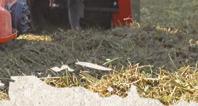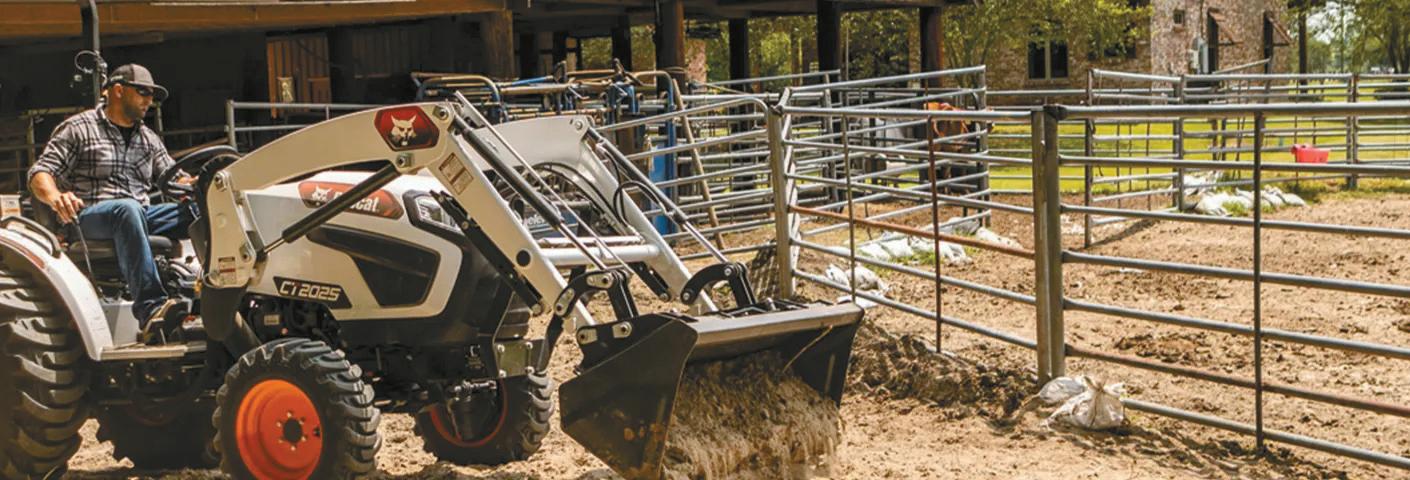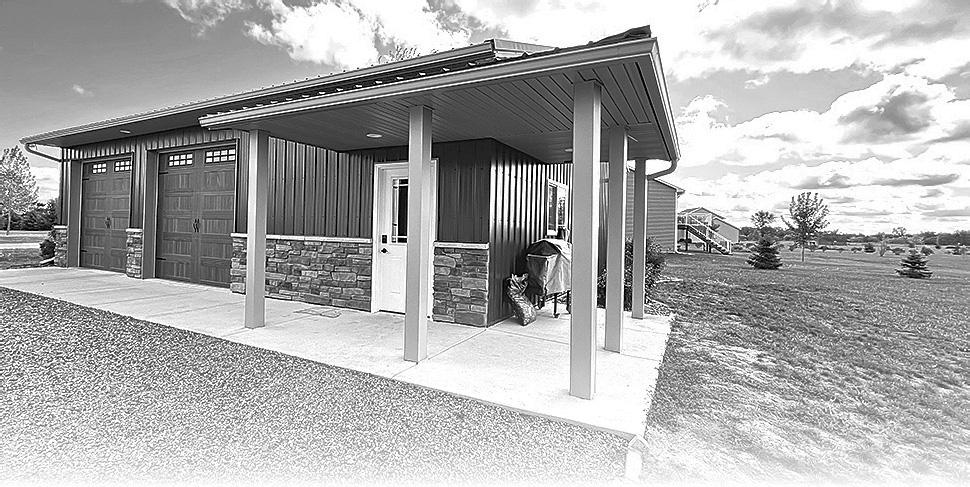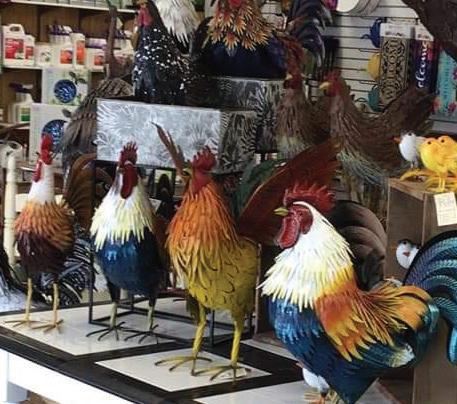






















 BY SARA EISINGER STAFF WRITER
BY SARA EISINGER STAFF WRITER


BELGRADE — Jasmine Barkley found herself jobless in June 2020.
Bored and stuck indoors due to pandemic restrictions, the future Big Poppa Plantery owner purchased her first house plant with no inclination it would bring new life to so many.
“I needed to embrace the idea that houseplants aren’t just plants,” Barkley said. “They bring healing, happiness and peace.”
Located in Belgrade, the indoor plant business outgrew its original 700-square-foot space to flourish in a home, equipped with a 20- by 20-foot room. The new room is large enough to hang the extra racks and shelves needed for up to 40 species of succulents, cacti, tropical plants and more to total approximately 1,000 house plants.
Presently, Barkley sells at farmers markets in Richmond, Rice, Cold


























Spring, Sauk Rapids and St. Joseph. Recently, she was invited to sell at Belgrade Hardware. Plants can also be purchased online.

out to be so easy. It was so cool to watch it grow.”
Barkley’s indoor plant business sprouted following a spontaneous shopping trip to a hardware store plant department.
“I thought, ‘I want a succulent from Mexico,’” she said. “I picked plants from Mexico because my grandma immigrated from Mexico to the U.S.”
Barkley chose cacti and succulents, but things did not pan out at first.
“I wanted plants I could relate to, and I killed them all,” she said.
“That was when I decided I was going to make this work. Then, I picked up a heart-leaf philodendron. I thought it was pretty, and it turned


With diagnosed attention-de hyperactivity disorder, Barkley said she tends to hyperfocus on activities nds enjoyable.

“It turned into something I was always thinking about,” she said. “I was on the internet to research all of the time, and it grew from there.”








Barkley learned about the peace lily, Monstera deliciosa, snake plant and philodendrons. She learned which plants were considered pet friendly, such as zebra plants, Hindu ropes, triostars and African violets.
Barkley page 2









Sara Eisinger, Writer sara.e@star-pub.com
Emily Breth, Writer emily.b@star-pub.com
Carol Moorman, Writer carol@melrosebeacon.com
Natasha Barber, Writer natasha@saukherald.com
Ben Sonnek, Writer ben.s@saukherald.com
Hans Lammeman, Writer hans.l@star-pubs.com
Alex Middendorf,
Robin Brunette, 320-293-5911 robin@saukherald.com
Missy Traeger, 320-291-9899 missy@saukherald.com
Tim Vos, 320-845-2700 tim@albanyenterprise.com
Mike Schafer, 320-894-7825 mike.s@dairystar.com
Neil Maidl, 320-292-4454 neil.m@star-pub.com
Jaime Ostendorf, 320-309-1988 jaime@star-pub.com
Bob Leukam, 320-260-1248 bob.l@star-pub.com
PRODUCTION STAFF
Amanda Thooft
Nancy Powell
Maddy Peterson
Cheyenne Carlson
Karen Knoblach
Annika Gunderson
Nadiia Zalitach

Barkley discovered many easy-to-grow plants, and it became no problem to keep cacti and succulents alive. Each type of house plant has its own needs, and she studied hard to learn what those were.
“I couldn’t keep all the joy I received from having houseplants all to myself, as it was a passion that I needed to share,” Barkley said. She thought friends and family could derive similar feelings from watching plants mature into their own unique beauty. So, Barkley began propagating her plants.
Today, her propagating station can hold approx-
imately 500 cuttings at one time.
“I needed to share all the positive energy it brought to my home,” she said. Barkley had a friend who was suffering from depression.
“They needed a distraction,” Barkley said. “They stayed at home a lot.
So, I brought some plants over. I taught them how to care for the plants. They were like, ‘It’s nice having something in the room that I can
watch bloom.’”
But, there were many others who were isolated indoors. Barkley wanted to reach perfect strangers just as much. She identified a few common everyday stressors faced by most people and decided that everyone could benefit from growing their own plants.
“It makes me happy that they get to watch something flourish, knowing that they did it
on their own,” she said.
Barkley noticed that children also benefited from having plants around.
“I get customers with kids who get so excited about plants, especially cacti,” Barkley said. “They just light up. They get so excited.
Barkley page 3

















































































































BENSON — Nearly 70 teens arrive at Heartland Girls’ Ranch each year, where 19 horses roaming on 80 acres of green pasture aid in therapy.
The working ranch and group home is licensed by the Minnesota Department of Corrections to house girls ages 12-21. Its main house contains 24 beds. Another 10 beds are located in its Hearts for Freedom Program, which provides specialized services for girls who have been sexually exploited.
Once on the horse oasis, residents are provided with housing, support services, mental health treatment, trauma-informed therapies and education. Each girl has a unique story to share, whether a survivor of physical abuse, drug dependency or homelessness. Each girl is assigned a horse.
“We meet the girls where they are at,” said CEO Jeannie Thompson. “They take time to get to know their horses. We have children’s books, so they can read stories to their horses.”
Thompson said that residents participate in various experiential


learning and therapeutic activities that involve horses.
Educational activities could include animal care, on-grounds horse shows, Certified Horsemanship Association lessons with the options to earn certification, 4-H participation and year-round indoor/outdoor riding facilities.
More active girls get involved in driving, groundwork sessions, riding lessons, liberty work, holistic animal care techniques, vaulting and clinician visits.
At Halloween, Thompson said the girls dress their horses up. The girls take glamour shots with their horses, so they have something to take with them when they leave.
“We are always looking for new activities that the girls have never done before,” Thompson said.
On the weekends, the girls might go bowling, roller skating or to a movie. During the summer, they go swimming, hiking or fishing.
But, back on the ranch, horses have a thing or two to teach the girls about friendship.
“It’s not uncommon to have girls come in who have never worked with horses before,” Thompson said. “Over time, the girls learn to overcome their fears. It can be really intimidating. The ability to work with and be around large animals takes trust. The horse must trust that you will keep it safe, as youth must trust that the animal will keep them safe.”
Heartland page 6






































































































from page 5
Once trust has been built, the girls gain the confidence it takes to saddle up and ride off.
“It helps build self-esteem by giving them a sense of accomplishment, thinking, ‘I can accomplish goals if I set my mind to them. There is nothing I can’t achieve,’” Thompson said. “Working with horses is phenomenal when we see change.”
Things are not always bright and sunny when learning lessons of hard work and responsibility, but they do tend to be colorful.
“They are in charge of scooping poop,” Thompson said. “When a lot of girls come in here, they say, ‘Yeah, I am not doing that.’ They are
responsible for caring for the horses. They clean pens and feed them. It teaches responsibility. It also teaches them how to care for living creatures.”
But, Johnson said some girls cannot seem to get over the fear of large animals.
The solution? Cats.
“We have five barn cats,” Thompson said. “They keep an eye on things. The girls connect with the cats as well.”
Heartland page 9











instead.



























































Town: Melrose | Grade: 12 Parents: Paul and Andrea Toenyan
Melrose FFA Chapter
Tell us about your involvement in FFA. I’m involved with the Floriculture Career Development Event. Each fall, I attend the regional contest. For each of the past two years, I went to the Minnesota FFA Convention.




What has FFA taught you so far? It has taught me leadership skills, how to get involved in the community and where things come from. I’ve learned where everyday things, food and materials come from.
How do you intend to stay involved in agriculture after your FFA career? I plan to help local farmers whether it is hands-on or just bringing meals to farmers.
What are you involved in outside of FFA? I am in the National Honor Society and am on the basketball team.




What is something you believe people need to know about agriculture? Everybody relies on agriculture, and everybody needs it. It’s not just about farmers. It’s about people who live in cities and live in the world.

Paynesville 320-243-3938
www.feedcomn.com




from page 6
Thompson and 45 staff members share hope because they have seen the program’s impact. Some girls leave without exhibiting signs of noticeable change, but that rarely indicates all was lost.
“We had a youth who got done with the program about three years ago,” Thompson said. “She sent an email to her case manager. She wrote that if it hadn’t been for our program, she felt that she would have continued to be trafficked or have ended up in a worse situation, even dead. She communicated that she keeps in touch with two other girls and considers them her sisters. It is incredible when we hear things like that, because she was complicated when here.”
Thompson said girls arrive to Heartland Girls’ Ranch from all four
corners of the state. Referrals are sent from county social workers, probation officers and/or tribal workers. Typical referral reasons could include delinquency, child protection, voluntary placements or extended juvenile jurisdiction. The girls can stay on the ranch anywhere from nine months to one year.
“To make change in young lives takes time,” Thompson said. “We want them to realize that they have choices in life. They do not have to take the hand they were previously dealt.”
Teens are assigned horses to care for and saddle and ride at Heartland Girls’ Ranch in Benson. Some girls take horsemanship to the next level by learning training techniques and vaulting.












*Offer ends 6/30/2024. Available at participating and eligible dealers only. Offer may vary by product type, series, model and select units in dealer’s current inventory. Must take delivery from dealer stock by 6/30/2024. Offers available on new equipment in US and Canada only. Some restrictions apply. Length of contract and rate may vary. Monthly payment subject to change. Prior purchases not eligible. See dealer for details. Financing provided on approval of credit by authorized Bobcat finance providers to well-qualified buyers. All finance programs and rates are subject to final approval by the applicable Bobcat finance provider and are subject to change at any time without notice. Administrative fees may apply. Offer not available to government accounts, national accounts and municipal/utility bid customers. Bobcat Company reserves the right to extend or discontinue any of these programs at any time without prior notice.


















































































































from page 11

Howard Marthaler 320-250-2984
Cody Marthaler 320-429-1934
Established in 1975

Jason Marthaler 320-249-6062
Dominic Marthaler 320-429-5973
“We pick up all of the fruit before it rots and the aphids come,” Thomes said. “We ground egg shells to spread them around the base of zucchini and other plants. Slugs do not like salt because it causes them to dry up. My husband has installed copper rings around the base of the zucchini plants to create an electric magnetic field and keep bugs away. We are going to do that to all plants this year.”
The process of burying copper to rid pests is called electroculture, and the Thomeses said they find it to be effective.
Thomes has been gardening since she was a little girl.
“We had 3-plus acres of garden,” she said. “There were five of us in the family. We lived on the property with our grandparents. My grandma canned a lot. My parents were very frugal. You raised enough produce, carrots and green beans, anything and everything you could can to put
away for the year.”
It was where Thomes learned to can the strawberries, golden raspberries, rhubarbs, hot peppers and zucchini she grows today.
“Every day you were weeding or hoeing,” Thomes said. “I hated it as a kid. You would weed a row one day and the next row another day.”
Little did she know, that family garden harvested much more than the fruits and vegetables her grandmother preserved in jars. It grew Thomes into a skilled, hardworking gardener, which all paid off when unexpected medical bills, needs and expenses could have left the family in a dark hole, but she knew her roots all too well for that.
Thomes page 13



“We are in the land improvement business. We do farm drainage, ag waste systems, site work for farm buildings and silage pads, plus miscellaneous work. We also do county, township, and watershed work, as well as soil conservation work.”






- MBC Drainage, Sauk Centre













“I swore that I would never have debt,” Thomes said. “I had to put it all on a credit card.”
It was around the same time a close friend bit into one of her oatmeal cookies. The cookie was, reportedly, so delicious that she told Thomes to bake and sell them for profit. Thus, the idea of a farmers market side-hustle was planted.
“It started out part time,” Thomes said. “I sold in Annandale at Wright County Swappers Meet. Meanwhile, I worked my full-time job in Cold Spring at a granite manufacturing company. I sold baked goods one day a week. I would bake on Friday afternoons and sell on Saturday mornings. My clientele was good, and I had a lot of repeat customers.”
Four years came and went. All of those unexpected medical bills were paid off in no time, but Thomes loved baking for her custom-
ers. Her boys, Andrew and Matt Pirkl, enjoyed helping.
“My kids would label bags or wrap desserts,” Thomes said. “I added sweet breads and muffins. The lemon poppy seed and cinnamon raisin bread went over very well.”
Both kids were under the age of 9 and remained at their mom’s side, eager to help for spending money.
“Eventually, I was accepted into the Cold Spring Farmers Market,” she said. “I would bake on Tuesday night and sell on Wednesday.”
A couple of years later, Thomes added the Rice Area Farmers Market and St. Joseph Farmers Market to her list of duties. She brought along an array of artisan breads, cinnamon buns, caramel rolls and holiday cutout options.
“That gave me the opportunity to step away from my full-time job,” she
said. “Never in a million years did I think I would be doing what I am doing now. People will say they can’t do it. If you put your mind to it, you can.”
Thomes has never worked for anyone else since, but her main drive is watching clients bite into a cookie or muffin fresh out of the oven, smiles on their faces.
“I have had numerous customers who have said, ‘Holy smokes, was that ever good,’” Thomes said. “I just love what I do.”




















































from page 15
“We’ve lost a lot of those skills,” Skwira said.
The classes cover a variety of topics including how to make jams and jellies, preserve tomatoes, and dehydrate fruits and vegetables. They also cover nutritional benefits.
“A lot of these classes are going to incorporate different kinds of hacks in the kitchen to push (foods) a little further and still be able to consume them,” Skwira said. “Food waste is a huge issue in our country. We really try to be thoughtful of what we can do with our food waste and under-utilized foods.”
Classes cover tips like grinding dried garlic into garlic powder and using bruised apples to create applesauce, apple cider and apple cider vinegar.
“We don’t share this information enough,” Skwira said. … “We’re creating


more space to share opportunities to utilize foods. People in our area got a ton of (apples) from the food shelf, and nobody knew what to do with them. (It’s about) taking that humble apple and making it into all these different foods you can make and eat throughout the fall.”
Attendees will not only learn about how to use the foods in different ways, they will get to bring home what they create in class.
The effort at Sprout is made possible with the help of the grant, which was one of 11 U.S. Department of Agriculture Specialty Crop Block grants from the Minnesota Department of Agriculture.
Sprout page 17









































































Johnson from page 19
The volunteers, Froemming said, are responsive to needs in their communities.
“If a volunteer is in a county where local foods are important to stakeholders, they can do volunteer work that relates to local foods,” she said. “(They provide) a localized
response to the needs: clean water, local foods, plant biodiversity.”




In Meeker County, the Master Gardener volunteers host a number of events and are involved in the community in a variety of ways. The team holds a garden gala each spring as an opportunity to hear from speakers on garden topics. The group also offers an annual summer garden tour. And, for years, the Meeker County chapter has been caring for a community plot near the Litchfield Civic Arena. The plots are open to the public for use, and the Master Gardener volunteers plant not only flowers there but also vegetables.
“What we get from the garden we take to the food shelf to help the community,” Johnson said.
The group also teaches the benefits of gardening to area children. They have partnered in the past with 4-H to provide trainings, they host a booth at the Meeker County Fair and usually participate in a hands-on demonstration for kids’ day at the fair. They also give presentations at area schools and give third-grade students trees to plant for Arbor Day.
Johnson said she hopes the efforts inspire youth to grow their own gardens.
Johnson page 23










• 4 cups rhubarb
• 3/4 cup sugar
• 1 3-ounce packet of berry Jell-O
• 1 13.25-ounce box yellow cake mix
• 1/2 cup butter, melted
• 1 cup water
Spray a 9-by-11 cake pan and dump rhubarb in. Sprinkle the Jell-O and sugar over the top. Mix the cake mix, butter and water together and pour over top of rhubarb combination. Bake at 350 degrees for 45-55 minutes.
• 1 loaf stale bread
• 2 eggs
• 1 cup milk
• 1/4 pound butter
• 1/2 small onion
• Flour
Combine bread, eggs and milk in a bowl and mix well. Stir in flour until the mixture can be rolled into 2-inch balls. Drop in boiling water and cook for 30 minutes. Brown butter and onion. Cut dumplings in half or quarters and stir in with the butter/ onion mix and serve.
• 2 cups diced tomatoes
• 1/3 cup red onion
• 1/2 tablespoon balsamic vinegar
• 1/2 teaspoon olive oil
• 1/4 teaspoon salt
• 1/4 teaspoon pepper
• 1/2 cup fresh basil
• 1 teaspoon garlic
• 1/4 cup Parmesan cheese, finely shredded
• 1 French baguette
Slice bread and lay on a cookie sheet. Drizzle or brush on olive oil lightly and toast for 8-10 minutes at 350 degrees. Combine tomatoes, onion, balsamic vinegar, salt, pepper, garlic, basil and Parmesan, and place over toasted bread. Serve immediately.
Want your favorite recipes to be featured in Country Acres?
Contact Sarah at sarah.c@star-pub.com
• 4 tablespoons chili powder
• 1 tablespoon paprika
• 1 tablespoon salt
• 1 teaspoon oregano
• 1 teaspoon black pepper
• 1 teaspoon garlic
• 1 teaspoon onion powder
• 2 tablespoons cumin
Combine all spices together thoroughly. Add desired amount to ground beef.
• 3 cups soft bread, torn up
• 2 cups milk, scalded with 1/4 cup butter
• 1/2 cup sugar
• 2 eggs, slightly beaten
• 2 boneless chicken breasts
• 1 11-ounce can of corn, drained
• 1 15-ounce can of black beans, drained and rinsed
• 1 10-ounce can diced tomatoes with green chilies, undrained
• 2 cups chicken broth
• 1/4 teaspoon salt
• 1/2 cup seedless raisins, optional From
• 1 teaspoon cinnamon or nutmeg
Place bread in a 1 1/2-quart baking dish. Blend in remaining ingredients. Place baking dish in pan of hot water, 1-inch deep. Bake at 350 degrees for 40-45 minutes or until knife inserted 1-inch from edge comes out clean. Serve warm with vanilla sauce.
• 1 cup sugar
• 2 tablespoons cornstarch
• 2 cups water
• 1/4 cup butter
• 2 teaspoons vanilla
Melt butter in a sauce pan. Add remaining ingredients and mix well. Remove and serve hot over bread pudding.

• 1-ounce packet ranch seasoning mix
• 1 teaspoon cumin
• 1 tablespoon chili powder
• 1 teaspoon onion powder
• 8 ounces cream cheese
• 1 cup shredded cheddar cheese
Place chicken at bottom of slow cooker. Add corn, black beans, diced tomatoes/green chilies, chicken broth, cumin, chili powder, onion powder and ranch seasoning and mix together. Place cream cheese on top of chicken. Cover and cook on low for 6-8 hours. Remove chicken and shred. Return to pot and add cheddar cheese.



































































































 BY EMILY BRETH | STAFF WRITER
BY EMILY BRETH | STAFF WRITER
LITCHFIELD — Not all planting can be done with a machine, which Steve and Joan Turck have learned by planting over 8,000 trees every year.
“It’s a lot of hand labor with the trees,” Joan said. “During planting, everyone helps. Even the grandkids

Turck page 26



















































from page 25
The Turcks’ sons, Jesse, with his wife Jean, and Nathan, with his wife Jessica, and their children, moved home three years ago so they could help more on the farm.
The Turcks also plant corn and soybeans, but the trees are the most labor intensive.
Steve said they prefer to use a planter for tree planting when they can, but they have to focus on the volume they need a decade from now. So, they often handplant trees in between mature trees.



Every year, they plant about 10 acres of trees. In a normal year, planting starts in late April with the hopes of being done before Memorial Day or sooner.
The farm has a variety of trees ranging from evergreens, including fir, spruce and pine, to deciduous varieties, which vary from birch to Japanese tree lilac to the more common maple and oak. They also have apple, cherry, pear and plum trees.
For evergreens, 1 acre averages about 1,000 trees.

“We purchase evergreen seedlings from other growers that specialize in growing them,” Jesse said. … “We use a drill with a 4-inch auger bit on it to drill the holes for the evergreen seedlings. Then, we put the trees in and gently pack the dirt around the roots.
The trees average about a foot or less of growth per year. It usually takes
about seven to 10 years to get evergreens the right size and height for customers.”
If there is an open field, Jesse said the family then uses a tree planter.
“There is a tractor driver and two people, who ride on the plant-



Turck from page 26
er, that put the trees in the trench the planter makes,” Jesse said. “Then, there are tires that close the trench behind the trees.”
Landscape trees are also purchased from a grower and are between 4 and 10 feet tall when they are planted at the farm. However, the way they are planted changes.
For landscape trees, they use a 24inch auger on a skid loader. Then, they place the tree in and put the dirt back in the hole. The size of the crew during planting changes from day to day, averaging between two and 12 people.
Weather is always a factor in planting.
“If you get them planted early, they normally get one good, big spring rain,” Steve said.
However, even if the weather is accommodating, and they are able to plant early in the season, an early spring can be tricky to judge.
“We are not fond of early springs,” Steve said. “We also don’t want a late frost like Mother’s Day after an early spring. If the trees popped out, they will become damaged. We don’t know what the winter is going to do. This is the first year we had people call wanting to see trees (this early in the year) already.”
A challenge the family faces is knowing that some of the trees they plant are not going to survive. During each of the last five years, they’ve lost a large percentage of the trees they plant, making it hard to think about the next year of planting and all of the work they are going to put in again.
“The biggest impact for tree survival is the amount of water,” Jesse said. “Lack of water is hard on most plants. Some trees are more tolerant of wetter soils. Extreme temperatures can also affect smaller trees.”
Knowing that the public enjoys the trees, and that people rely on their tree farm is what pushes the family to continue along with the hopes for a better year.
“Seasons change, weather changes; everybody in agriculture has to be optimistic,” Joan said. “It’s good work though.”
After the spring planting season and fertilizer application, the Turcks pick pine cones off evergreen trees to enhance tree growth. Evergreen trees are sheared, or shaped, throughout the summer.
“Shearing is done by hand with a hedge clippers or special machete-like knife,” Jesse said. “A lot of the shearing is done by a crew that specializes in shearing for Christmas tree farms. The time it takes varies by tree size and experience level. An experienced shearer can do about a tree a minute.”
Joan said different trees have to be sheared at various points in the grow-


A group of
ing season.
“Shearing causes the tree to shoot more buds and become fuller,” Joan said.
Steve began the business in 1981 when he realized they had about 20 acres of land that was marginal for row crops. He planted the land with trees instead, and when the trees started growing and selling, he realized the market potential. Steve and Joan started employing youth to help sell the evergreens that same year.
“It was in about 2007 that we started with other landscape trees,” Steve said. “We sold only evergreens before that. … It started as a way to use the land, then it just got bigger than we thought.”
The family strives to have a tree for everyone. If the family does not have the tree a customer is looking for, they recommend tree farms that may be able to help.
They encourage customers to think about potential locations for planting before coming in as well as the purpose of the tree and how they plan to transport it. They deliver Christmas trees to some of their wholesale customers and will deliver landscape trees if it is a large order.
“The balled and burlapped (trees) typically have 600 pounds of dirt,” Steve said. “The tree spade easily has 10,000 pounds of dirt.”
Through the years, the business has changed and so have the interests of its customers.
“It started out with people not knowing we had landscape trees, and now, we hear, ‘We didn’t know you had this kind of landscape tree,’ or ‘We didn’t know you had fruit trees.’ But, it slowly gets around,” Steve said.











